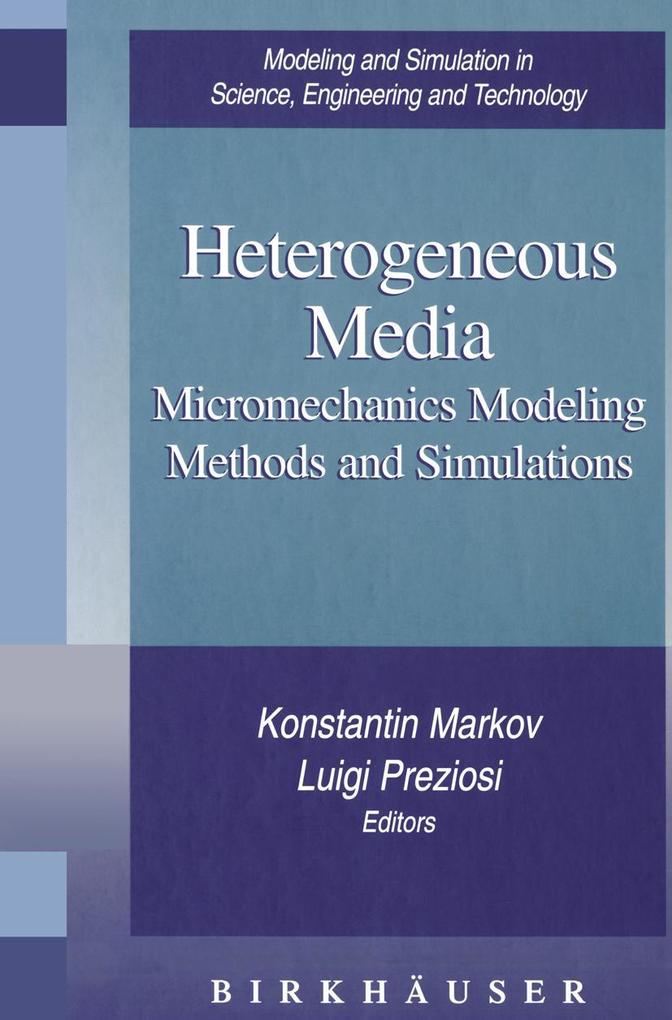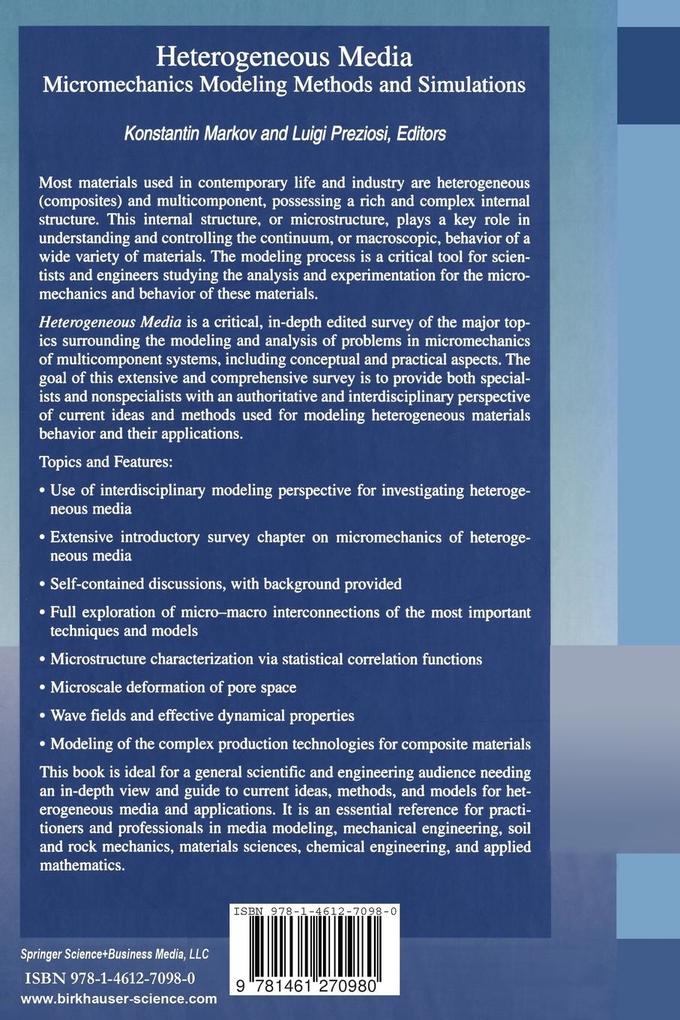Most materials used in contemporary life and industry areheterogeneous (composites) and multicomponent, possessing a rich andcomplex internal structure. This internal structure, ormicrostructure, plays a key role in understanding and controlling the continuumbehavior, or macroscopic, of a wide variety of materials. The modelingprocess is a critical tool for scientists and engineers studying theanalysis and experimentation for the micromechanics and behavior ofthese materials."Heterogeneous Media" is a critical, in-depth edited survey of themajor topics surrounding the modeling and analysis of problems inmicromechanics of multicomponent systems, including conceptual andpractical aspects. The goal of this extensive and comprehensive surveyis to provide both specialists and nonspecialists with anauthoritative and interdisciplinary perspective of current ideas andmethods used for modeling heterogeneous materials behavior and theirapplications. Topics and Features:* all chapters use interdisciplinary modeling perspective forinvestigating heterogeneous media*Five chapters provide self-containeddiscussions, with background provided*Focuses only upon most importanttechniques and models, fully exploring micro-macrointerconnections*extensive introductory survey chapter onmicromechanics of heterogeneous media*microstructure characterizationvia statistical correlation functions*micro-scale deformation of porespace*wave fields and effective dynamical properties*modeling of thecomplex production technologies for composite materialsThe book is ideal for a general scientific and engineering audienceneeding an in-depth view and guide to current ideas, methods and
Inhaltsverzeichnis
Elementary Micromechanics of Heterogeneous Media. - 1. 1 Introduction. - 1. 2 The homogenization problem. - 1. 3 Some basic results. - 1. 4 The single inclusion problem. - 1. 5 One-particle approximations. - 1. 6 Elastic properties of polycrystals. - 1. 7 References. - Diffusion-Absorption and Flow Processes in Disordered Porous Media. - 2. 1 Introduction. - 2. 2 Microstructure functions. - 2. 3 Steady-state trapping problem. - 2. 4 Time-dependent trapping problem. - 2. 5 Steady-state fluid permeability problem. - 2. 6 Time-dependent flow problem. - 2. 7 Variational principles for trapping problem. - 2. 8 Variational principles for flow problem. - 2. 9 Bounds on trapping constant. - 2. 10 Bounds on fluid permeability. - 2. 11 Cross-property relations. - 2. 12 References. - Self-Consistent Methods in the Problem of Wave Propagation through Heterogeneous Media. - 3. 1 Introduction. - 3. 2 The main hypotheses of the methods. - 3. 3 Integral equation of the diffraction problem. - 3. 4 General scheme of the effective field method. - 3. 5 General scheme of versions I and II of the EMM for matrix composite materials. - 3. 6 The solutions of the one-particle problems of version I of the EMM and of the EFM. - 3. 7 Asymptotics of the solutions of the dispersion equations. - 3. 8 Versions II and III of the EMM in the case of spherical inclusions. - 3. 9 Version I of the EMM and the EFM in the case of isotropic random sets of inclusions. - 3. 10 Versions I, II, and III of the EMM for matrix composite materials. - 3. 11 An approximate solution of the one-particle problem. - 3. 12 The EFM for composites with regular lattices of spherical inclusions. - 3. 13 Versions I and IV for polycrystals and granular materials. - 3. 14 Discussion. - 3. 15 Conclusions. - 3. 16 References. - Deformable Porous Media and Composites Manufacturing. - 4. 1 Introduction. - 4. 2 Ensemble average approach. - 4. 3 Effective media approach. - 4. 4 Deformable and saturated porous media models. - 4. 5 Boundary conditions. - 4. 6 One-dimensional infiltration. - 4. 7 Simulations. - 4. 8 Three-dimensional unsaturated isothermal model. - 4. 9 Open problems. - 4. 10 References. - Micromechanics of Poroelastic Rocks. - 5. 1 Introduction. - 5. 2 Hydrostatic poroelasticity. - 5. 3 Undrained compression. - 5. 4 Constitutive equations of linearized poroelasticity. - 5. 5 Equations of stress equilibrium and fluid flow. - 5. 6 Dependence of poroelastic parameters on pore structure. - 5. 7 Conclusions and future directions. - 5. 8 References.


































